The selection of window coverings requires careful consideration because they regulate light, guarantee privacy and improve the room’s overall appearance. There are other options besides curtains for window coverings. There isn’t a single person who hasn’t heard of blinds, even though blinds for windows don’t enjoy the unquestionable popularity of curtains. If you choose the appropriate design, blinds function fantastically in contemporary and vintage settings. Whatever your preferences are for style and décor, you will discover your ideal window treatment in this collection of stunning window blind ideas.
See also: Best wood window design ideas for your home
What are window blinds?
Blinds are a type of window covering. A window blind normally consists of several long slats, either vertically or horizontally. The cords that go through these slats, which may be made of wood, plastic or metal. Window blinds come in various styles, including roller shades, pleated, Roman, Venetian, etc.
Blinds can be moved manually or with the help of a remote control. They may be turned from an open position, where the slats are spaced apart, to a closed position, when the slats are stacked on top of one another and overlapping to block most of the light.
How are blinds different from curtains?
The primary distinction between curtains and blinds is the extent to which they cover the window. Blinds directly cover the window, whereas curtains typically hang in front of the window and down to the floor. Automated mechanisms can be used for both blinds and curtains, further streamlining daily life in the house. The size can be altered to suit the needs of your windows or doors. Blinds may also be more durable than curtains because they don’t last as long.
Blinds for windows: Purpose
Although isolation and control over the amount of light entering your home are the primary functions of window coverings, window blinds can serve various additional functions. For many people, the style or design choice is a significant factor in purchasing blinds. In contrast to blinds, available in a much wider range of styles and variations, curtains can sometimes look outdated. While some blinds can be raised or lowered to regulate privacy, others can be slanted or adjusted to block out what’s happening within while still permitting you to enjoy the surroundings.
Blinds for windows: Benefits
- Light control: To adjust the amount of light coming in, you can tilt the blinds up or down and open or close them.
- Energy efficiency: Blinds can act as insulation by trapping air against windows, making it simpler to heat or cool the house.
- Easier to clean: They can be kept clean with a little spot cleaning and dusting a few times a year.
- Various options: There are numerous variations and styles available.
Types of blinds for windows
A type of window blind can be distinguished from another in more ways than just the material. The functioning mechanisms used to operate different window coverings and their arrangement (vertical or horizontal) are crucial factors. You can choose from the following list of blinds for windows.
Roman blinds for windows
Do you have a comfortable spot in your house where you can unwind after a long day at work? Roman window coverings in cotton fabric and soft pink will add a pop of colour to this area. The white coordinating cushion completes the design of this seating area, while the ruffle border of these blinds gives a sense of intrigue. Roman window coverings fold neatly into stacks rather than rolling up. Using them in the living area and bedroom will be ideal.
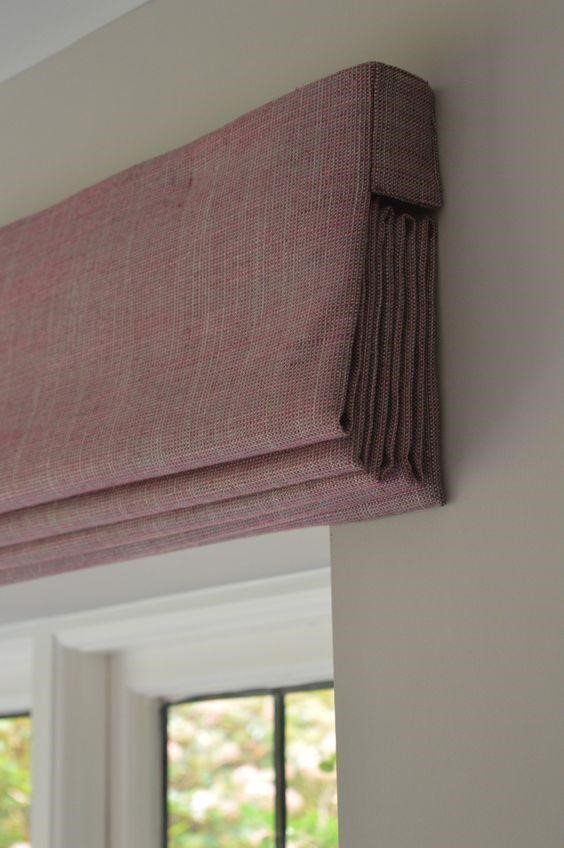
Source: Pinterest
Vertical blinds for windows
These vertically stacked blinds don’t roll up; they turn and twist. Individual slats on vertical blinds run along a track at the top of the blind. Vertical blinds can open in one of two ways, depending on the style: from side to side or dividing in the middle. These blinds are a popular option for windows that go all the way to the ceiling and patio doors. But they can also be used for smaller windows. They are ideal for use in a study or home office.
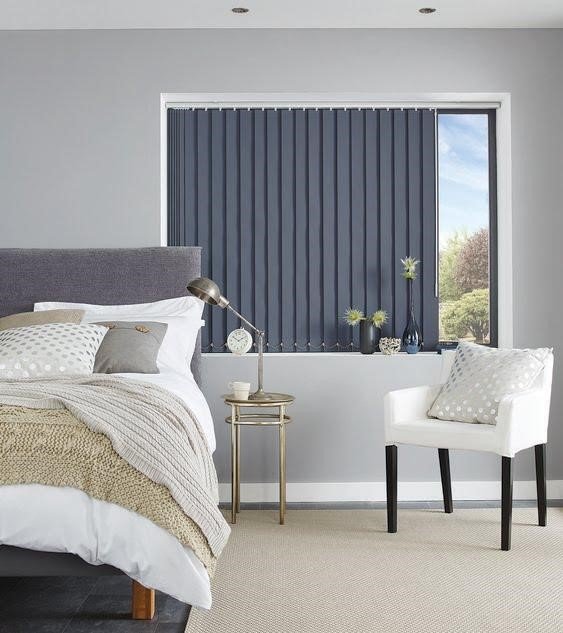
Source: Pinterest
Wooden blinds for windows
These window coverings are horizontally arranged wooden slats that may be raised or lowered according to the light you want to let in. There is no denying that wood instantly elevates a plain décor. Faux wood window blinds will subtly improve the appearance of your windows and serve as a sturdy barrier to block the sunlight entering your room. It will add a classy touch to your house’s plain corner. These wooden blinds don’t split, warp, break or fade over time. These would work well in a balcony or hallway.
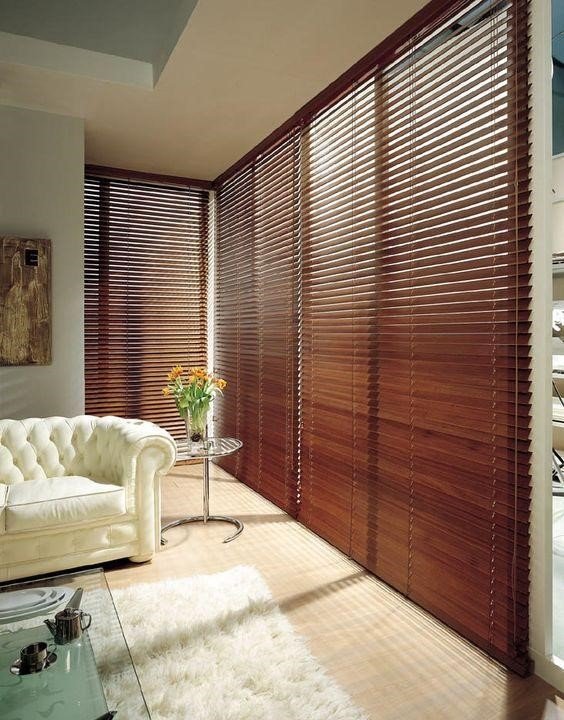
Source: Pinterest
Zebra blinds for windows
Due to their capacity to filter light, zebra blinds are among the greatest window coverings for living rooms. The filmy fabric strips let natural light enter living areas, bringing a lively feeling to the rooms. They are excellent for bedrooms as well. These are a more contemporary alternative to roller blinds and roll open and shut. Using them in the living and dining rooms will be ideal.
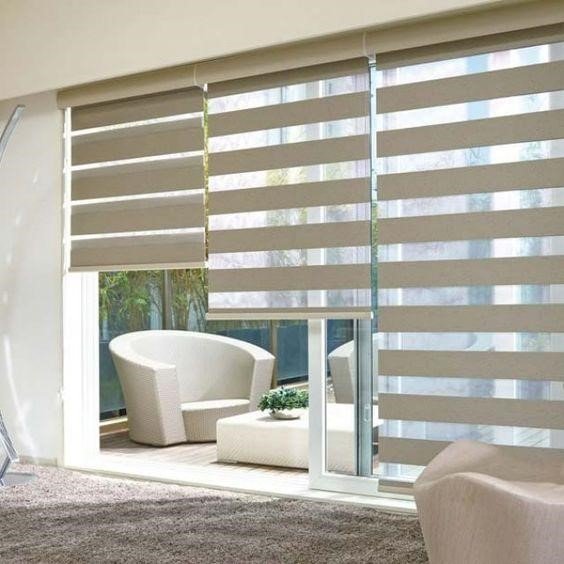
Source: Pinterest
Solar blinds for windows
Similar to roller blinds in appearance, solar blinds can shield your space from the sun’s heat, glare and UV rays. The solar-powered blinds can keep the heat from the sun out of your home when completely closed, much like regular solar shades can. As a result, because they offer active shielding, solar blinds are thought to be able to help you save up to 30% on your air conditioning expenses. Use of them will be ideal in bedrooms and bathrooms.
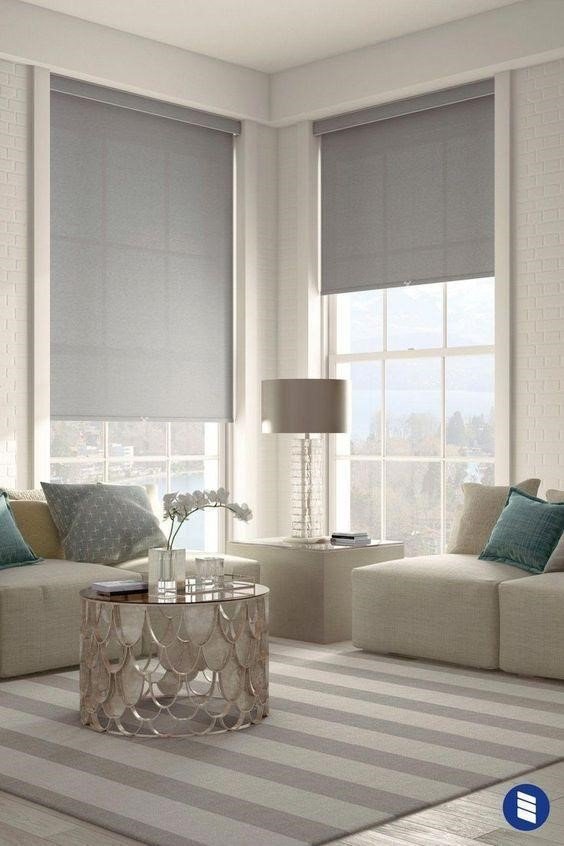
Source: Pinterest
Venetian blinds for windows
The most common type of blinds is Venetian blinds. These are horizontal blinds with horizontal slats fastened together with tapes or strings. The bottom slat of a Venetian blind presses into the slat above it as it is raised. These blinds may be tailored specifically for every window, even arched ones. Use them at your home office, study, or on your balcony.
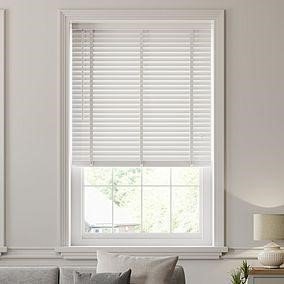
Source: Pinterest
Mini blinds for windows
Mini blinds operate very similarly to Venetian blinds, but they have slats that are narrower than those found in conventional Venetian blinds. Typically, the slats are one inch thick. Micro blinds may look worn after some time. Although thicker or faux wood is significantly more attractive, the price is higher. Mini and micro blinds have the additional drawback of being more challenging to maintain. More slats must be cleaned, and the job is much more difficult.
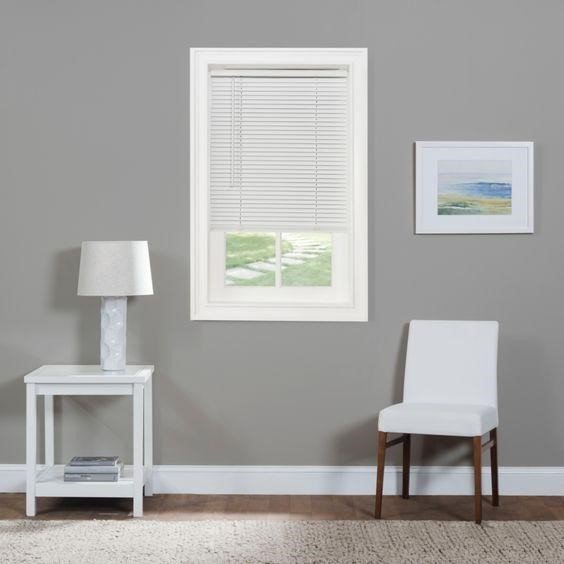
Source: Pinterest
Double roller blinds for windows
Even if formal living room decor does not look great with many accessories, you can make them stand out with clever furniture. Put double roller blinds on your windows for privacy and light filtering, and give your grey-themed living room decor a contemporary twist.

Source: Pinterest
Roller blinds for windows
Roller shades are another common type of shade. Roller shades can be rolled up or down to meet your needs. They are typically made from synthetic or natural fabrics. Roller blinds come in various styles and can be mounted to windows in several ways. The most affordable roller shades have a mechanism that allows you to see the various components and mounting hardware of the shade from the outside. It is useful in case of tangles and makes it possible to observe everything.
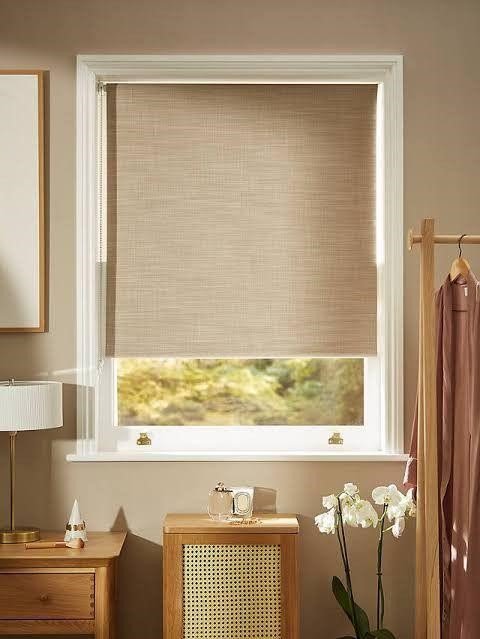
Source: Pinterest
Bamboo/woven wood blinds for windows
Include natural, organic bamboo window blinds to breathe new life into your peaceful retreat. Modern homes have adopted bamboo roller blinds for their high durability and calming energy. By adding new pots to the window sill, you can increase their inviting depth.

Source: Pinterest
Panel blinds for windows
Panel blinds are a popular option for patio doors, bi-fold windows and very large windows, and a great option for room separators due to their adaptability. For those looking to make a statement and add something unique to their home, panel blinds are the perfect option. You can open and close panel blinds because the portions move along a track.
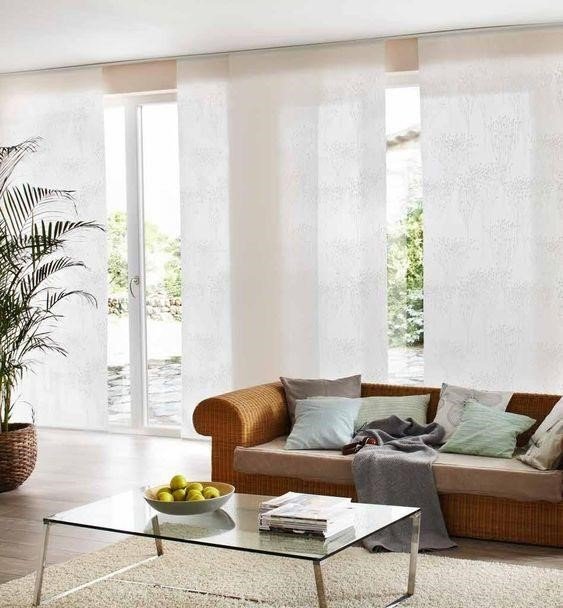
Source: Pinterest
Cellular blinds for windows
Cellular blinds, commonly called honeycomb blinds, are a common yet fashionable window solution that works well in most houses. Your spaces may benefit greatly from cellular blinds. The blinds have special insulating qualities that keep your rooms cool on hot days and warm in the winter. The added insulation provided by double-cell honeycomb blinds makes them ideal for use on large windows.
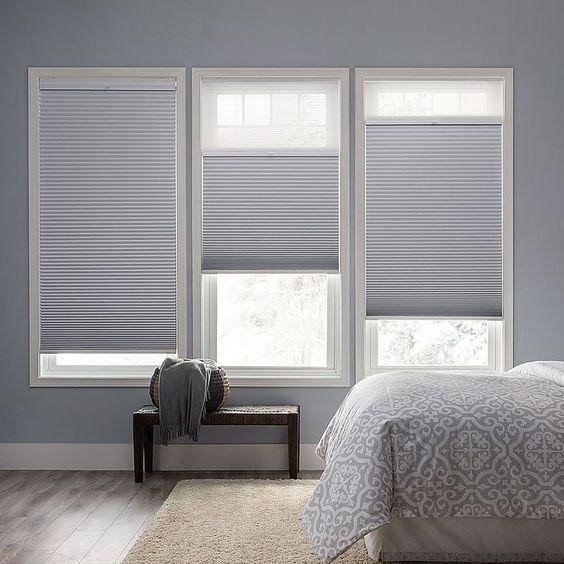
Source: Pinterest
FAQs
Are blinds less expensive than curtains?
Anybody on a budget often opts for blinds because they are typically less expensive than curtains. Yet that doesn't negate the possibility of attractive blinds. In many situations, blinds are preferable over curtains, especially if they will be installed in a compact room.
Which type of blinds is most popular?
Regarding the most popular blinds, roller shades have consistently topped the list and are likely to remain at the top. They are one of the most adaptable solutions for matching your blinds to interior décor because they are offered in various fabrics, colours, and styles.
| Got any questions or point of view on our article? We would love to hear from you. Write to our Editor-in-Chief Jhumur Ghosh at [email protected] |
Housing News Desk is the news desk of leading online real estate portal, Housing.com. Housing News Desk focuses on a variety of topics such as real estate laws, taxes, current news, property trends, home loans, rentals, décor, green homes, home improvement, etc. The main objective of the news desk, is to cover the real estate sector from the perspective of providing information that is useful to the end-user.
Facebook: https://www.facebook.com/housing.com/
Twitter: https://twitter.com/Housing
Email: [email protected]











